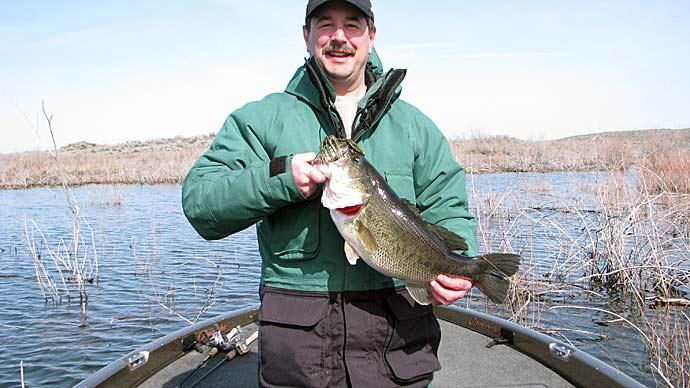
If you have the climate and the pond suitable for Florida-strain largemouth, you're still a long way from catching that 10-pound bass. The next challenge is buying the proper fish.
Deal with reputable hatcheries and brokers. Work with fish producers or consultants who have been in business, and know the water and soil-types of your area. Check references. Ask if the fish have been genetically tested. Ask for written proof.
Don't place much stock in a fish-hauler who claims he can tell a Florida bass from a native, just by eye-balling it. Granted, many Florida bass have a certain camouflage coloration that resembles a dollar bill, and many have narrow heads with short, stubby body profiles. But often, northern bass in similar conditions answer to the same description. Truth is, the nation's top fisheries biologists readily admit that Florida bass can not be identified by their physical characteristics.
To know for sure, scientists use a process called "electrophoresis." It's a test that requires, not an eye test, but that tissues be taken from the fish in question and sent to a lab for genetic testing.
One such lab is on the campus of Texas A&M University. The Ph.D in charge is Ken Johnson, a silver haired fish disease specialist with the Texas Agriculture Extension Service.
Dr. Johnson recently helped open a new lab, housed in the Veterinary Medicine school on campus. One of the services rendered is designed for fish producers to have an outlet for checking genetic strains of cultured fish. Unchecked genetics has been a problem for fish farmers regionally. It's a hard sell when a fish farmer can't be definitive about the genetics of his fish, especially bass.
Electrophoresis can determine whether a population of largemouth bass contains genes representative exclusively of the northern subspecies, exclusively of the Florida subspecies or some genetic mix of these two types of fish," wrote Dr. Johnson. "It is possible also to make an estimate of the relative contributions of each subspecies."
In other words, we now can learn if you have pure strain Florida bass, or maybe a first, second or third generation cross, and how much influence your gene pool has. How important is that? Facts like these are important when stocking a new lake, or when wanting to change the gene pool in an existing lake.
Want to test the genetics in your pond? Be prepared to write a check. Samples are tested in sets of 14 fish, typically 2 to 7 inches long. Expect to pay $300 for the first set. Subsequent batches may be tested for $100 each.
| Tips on testing your fish... |
For the most reliable test results, the fish tissue from your pond should be frozen when it arrives at the lab. Send 25 to 30 individuals from a population. Here are tips on testing:
|
Reprinted with permission from Pond Boss Magazine



